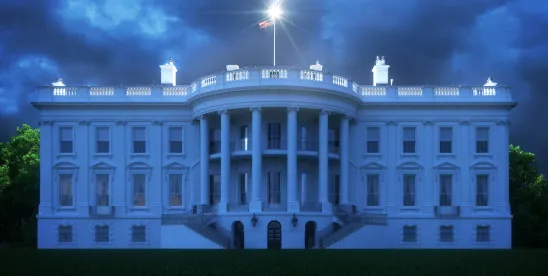The Trump administration is moving swiftly to reshape federal digital asset policy. On January 23, President Trump issued an executive order (Executive Order) that reverses key elements of a Biden-era federal policy framework that emphasized strict oversight, enforcement actions, and consumer protection warnings. On the same day, the SEC eliminated accounting rules that had effectively prevented banks from offering crypto custody services — marking a dramatic and coordinated shift in the government’s approach.
Executive Order Reverses Federal Digital Asset Policy
The Executive Order explicitly rescinds both President Biden’s Executive Order 14067 and Treasury’s Framework for International Engagement on Digital Assets — two cornerstones of previous US crypto policy. Where Biden’s directive prioritized central bank digital currency (CBDC) development, Trump’s Executive Order prohibits federal agencies from pursuing CBDCs, characterizing them as threats to “the stability of the financial system, individual privacy, and the sovereignty of the United States.”
The Executive Order also outlines a new regulatory direction focusing on private sector development of digital assets. Under the order, regulators must establish clear jurisdictional boundaries, protect access to blockchain networks and support stablecoin development. This approach differs notably from the previous administration’s focus on the restrictions and risks of digital assets.
Digital asset companies currently face a patchwork of conflicting interpretations from multiple federal regulators, each claiming jurisdiction. Aiming to resolve this regulatory fragmentation and uncertainty, the Executive Order establishes a President’s Working Group on Digital Asset Markets, chaired by a Special Advisor for AI and Crypto and including key regulators like the Treasury Secretary, Attorney General, SEC Chairman and CFTC Chairman. The Executive Order gives aggressive deadlines for this Working Group. The Working Group faces tight deadlines unusual for executive orders: within 30 days, agencies must identify all regulations, guidance documents and orders affecting the digital asset sector, and within 60 days, each agency must submit recommendations for rescinding or modifying these rules. Within 180 days, the Working Group must deliver two significant items: recommendations for a comprehensive federal regulatory framework governing digital assets and stablecoins and, notably, an evaluation of creating a national digital asset stockpile. The consideration of a potential federal digital asset stockpile indicates a significant shift in government thinking — from viewing digital assets primarily as subjects of enforcement actions to examining their role as a possible strategic government-held asset class.
SEC Reverses SAB 121, Clearing Path for Bank Crypto Services
Adding to the sweeping changes, the SEC issued Staff Accounting Bulletin 122 (SAB 122), reversing the controversial Staff Accounting Bulletin 121 (SAB 121). SAB 121 required institutions safeguarding customer crypto assets to recognize both a safeguarding liability and corresponding asset at fair value on their balance sheets, effectively requiring banks to maintain capital against the full value of custodied digital assets. These onerous capital requirements made crypto custody services prohibitively expensive for most banks, deterring them from entering the market.
SAB 121 faced substantial industry opposition and a formal Congressional challenge through the Congressional Review Act. Though this legislative effort ultimately failed following President Biden's veto in July 2024, SAB 122 now adopts an alternative approach: institutions may evaluate potential losses from crypto custody obligations under standard contingent liability principles. This means banks need only set aside reserves for probable and reasonably estimable losses — the same approach used for traditional custody services.
The new treatment enhances the return on capital for banks’ digital asset operations, making it more feasible for financial institutions to offer crypto custody alongside their traditional securities services. For customers, this may enable access to institutional-grade custody solutions from their existing banking relationships rather than being forced to rely on specialized crypto firms that may lack the established risk management frameworks, insurance coverage, and regulatory oversight that traditional banks maintain. The change also allows US banks to better compete with international financial institutions that have already established digital asset custody operations.
These simultaneous actions by the White House and SEC mark a decisive break from the federal government’s previous wariness of digital assets. Where earlier policies cast digital assets primarily as vehicles for illicit finance requiring aggressive regulation and enforcement, the new framework positions digital assets as a legitimate part of the US financial system. This focus on digital assets during the first week of the Trump Administration suggests that improving the digital assets industry in the United States is a high priority.
The digital asset industry plays a crucial role in innovation and economic development in the United States, as well as our Nation’s international leadership. It is therefore the policy of my Administration to support the responsible growth and use of digital assets, blockchain technology, and related technologies across all sectors of the economy...



 />i
/>i
